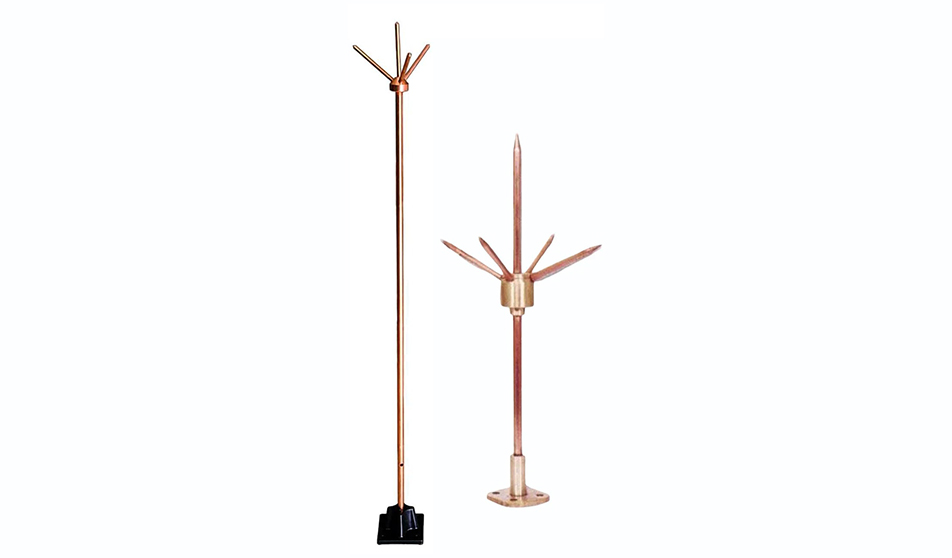Conventional Lightning Arrester – Reliable Lightning Protection
A Conventional Lightning Arrester is a traditional and time-tested solution for safeguarding buildings, structures, and industrial installations against lightning strikes. Installed at the highest point of a structure, it acts as a direct path for lightning current to safely discharge into the ground, preventing damage to equipment and human life.
Manufactured with high-quality copper or GI materials, our arresters are engineered to handle high-voltage surges, ensuring complete lightning protection.
Widely used in residential buildings, industries, telecom towers, and petrol stations, this spike-type design is cost-effective, easy to install, and requires minimal maintenance.
Highlighted Tags
- Copper Lightning Arrester
- Lightning Protection System
- Conventional Spike Arrester
- Building Lightning Conductor
- Traditional Lightning Rod
Applications
- Industrial Plants
- Office Buildings & Commercial Units
- Residential High-Rises
- Hospitals & Educational Institutes
- Telecommunication Towers
- Oil & Gas Stations
- Warehouses & Open Structures
Technical Specifications
- Type: Spike/Rod Type
- Material: Copper / GI (Galvanized Iron)
- Length: 1.2 to 2 meters
- Installation Height: Roof-mounted (Above highest point)
- Earthing Compatibility: Compatible with chemical or plate earthing
- Standard: IS/IEC compliant
FAQs – Line Interactive UPS
1. How does a conventional lightning arrester work?
It provides a low-resistance path for lightning current to flow directly into the ground, bypassing electrical systems and structures.
2. Where should the lightning arrester be installed?
At the highest point of the structure — rooftops, towers, chimneys — for maximum coverage and effectiveness.
3. Does it require maintenance?
Very minimal. A periodic visual inspection and earthing check are usually sufficient.
4. Is this suitable for residential houses?
Yes, especially for multi-story buildings or homes in lightning-prone areas.
5. What type of earthing system is required?
It is best paired with chemical earthing systems for efficient discharge and safety.


